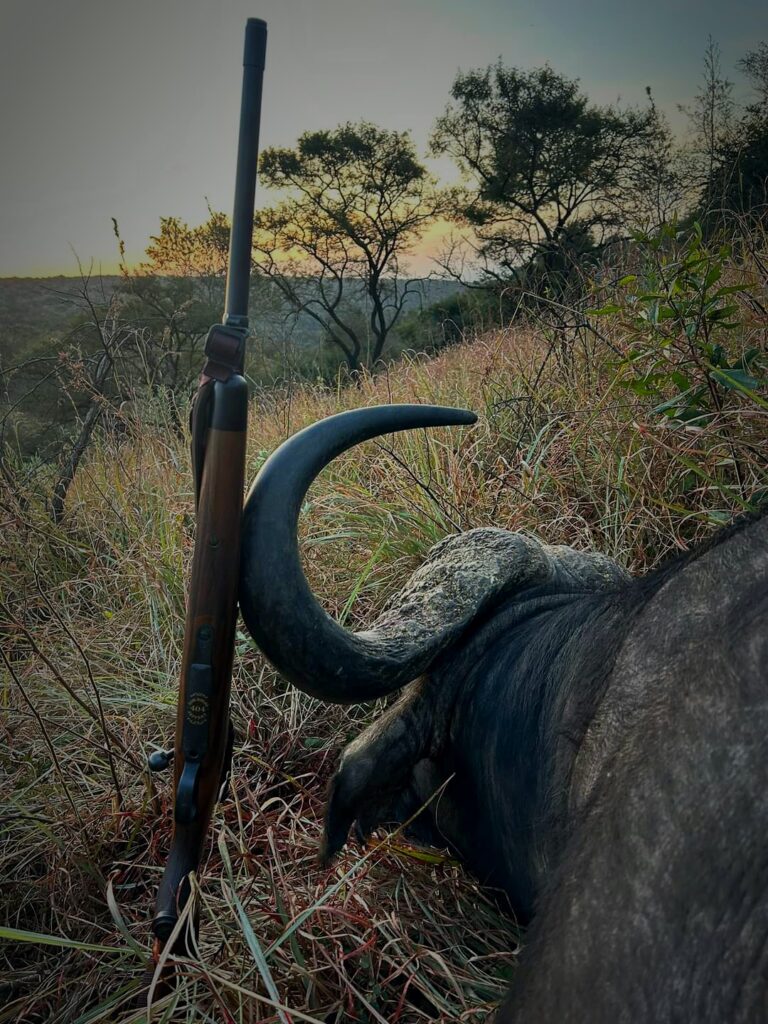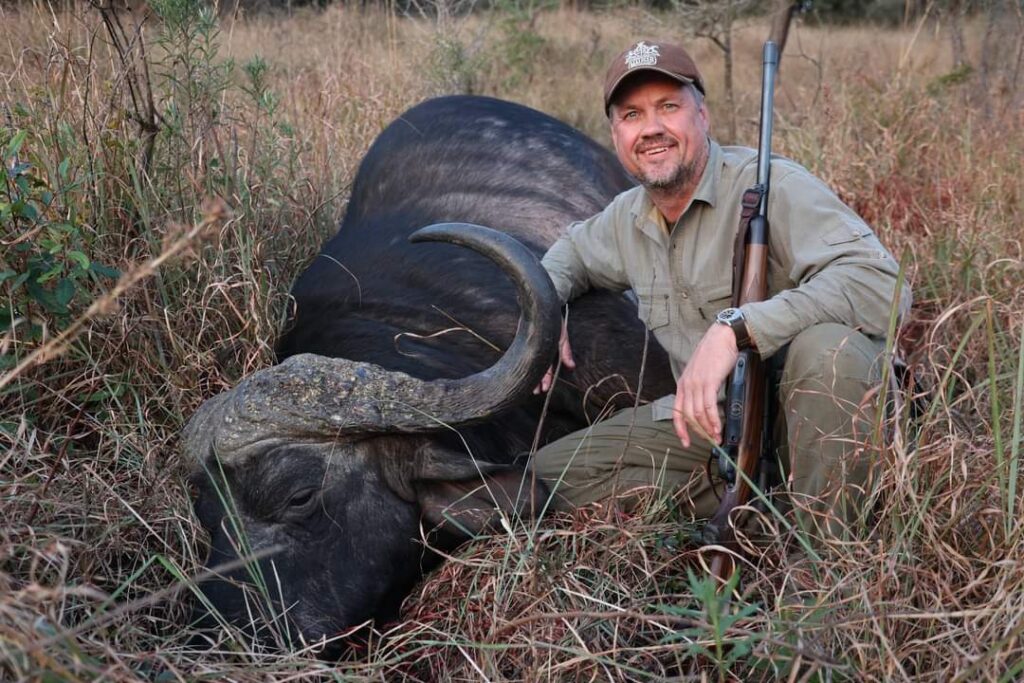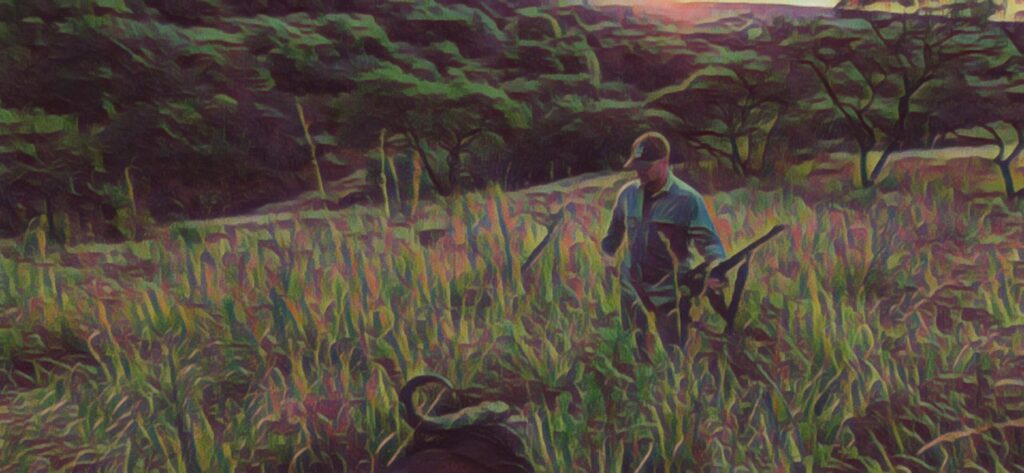
In the course of every safari season, there are countless special moments that etch themselves into a professional guide’s memory. I consider myself fortunate, as each season I return to the same 2000-hectare Private Game Reserve—a land I know intimately, where I work and live. Nestled along the valleys of the Nhlamvini, a tributary of the Umkomaas in Kwazulu- Natal, this reserve offers unique terrain with its varied habitats, each valley and thicket telling its own story. Every year, as I dedicate myself to the conservation of this land, I grow closer to the wildlife that calls it home. By the start of each season, I have a clear sense of which seasoned, old bulls roam the reserve, and which ones are on the list as trophy-worthy targets for the coming hunts.
When my now friend and returning client, Pieter-Ben, reached out about another Buffalo bull hunt, desiring an old bull with a ‘gnarly’, weathered boss, I knew exactly which bull we had to pursue. Pieter was joined by a friend who hoped to take a management Buffalo cow and perhaps a Nyala, should the opportunity present itself. But for Pieter and I, our focus was unwavering—this old bull with his scarred and chiselled boss was the true target.
Our safari started on a challenging note. Unfortunately, our timing coincided with game capture crews working in the area on a mass capture operation. Although they weren’t targeting Buffalo, the activity, noise, and commotion kept the Buffalo on edge, sending them skittishly into thick cover by early morning and keeping them there until late in the day.
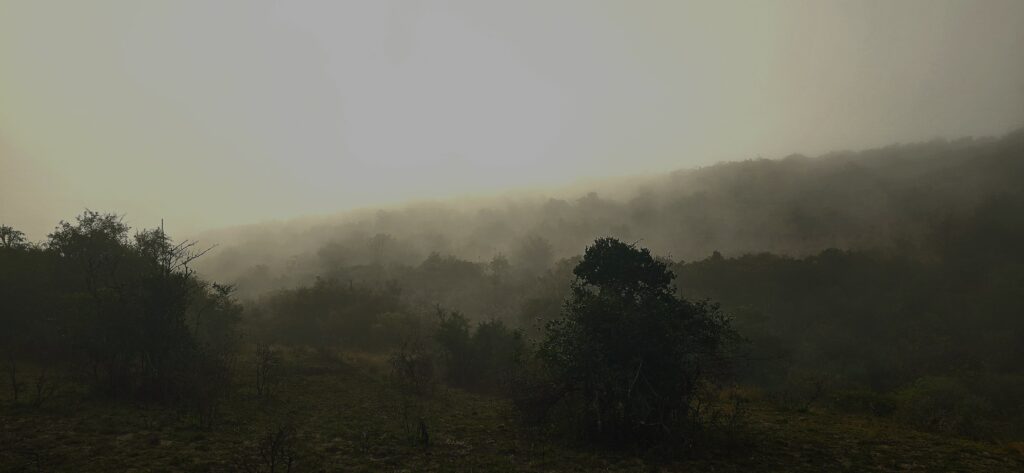
The first two days passed in relentless pursuit—endless glassing from high vantage points, following fresh tracks from the night before, only to end up deep in thorn country. Each time, we were met with the scolding of Oxpeckers ahead of us, their sharp calls echoing through what felt like impenetrable bush. We tracked groups of ‘Daga Boys’, always hoping to find the particular bull we sought, and each time we found ourselves tempted by fine bulls that, while impressive, were not him. Luckily, Pieter and I shared the same mindset; it wasn’t hard to convince each other. “That’s a nice bull…but it’s not him.” Both of us were fully prepared to go home empty-handed rather than settle for anything less. It was either this bull or the laughter and memories of a hunt well-attempted.
By the afternoon of day three, our luck seemed to turn as we intercepted a small herd of Buffalo with a few old cows. Pieter’s friend took his chance after a great stalk, delivering an impeccable shot,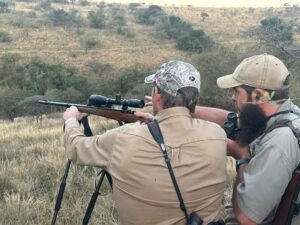 at close range, with his .375 Ruger. Spirits were lifted with the successful hunt, but the anticipation for the old bull remained. We had one last full day ahead, and despite all our effort, we still had no clear sign of our target.
at close range, with his .375 Ruger. Spirits were lifted with the successful hunt, but the anticipation for the old bull remained. We had one last full day ahead, and despite all our effort, we still had no clear sign of our target.
On the morning of day four, we shifted our focus to the Eastern side of the Reserve—a place we hadn’t ventured due to its proximity to where the game capture nets were, who have since completed and moved out. Mo, the landowner, had informed us that he spotted some bull tracks along a road in that area late the previous afternoon. With a renewed sense of purpose, we set off, hoping that, finally, our perseverance might lead us to the prize bull we had so patiently awaited.
The morning air was crisp as we set out, with just enough light to see the path ahead. We walked the contour road along the top of the valley, the best vantage for spotting the tracks of any large Bovine passing in or out of the area. Halfway along the road, the quiet morning was shattered by the unmistakable, heart-stopping call of an Oxpecker. The bird’s alarm echoed from about 80 meters into the thorny thickets above. After a few seconds, the birds settled, but our senses did not. Any approach to that area would be nearly impossible to do undetected, so we continued along the road, soon finding the fresh tracks of a big bull entering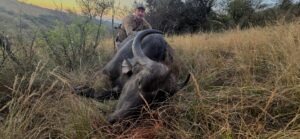 that block. We followed his trail, backtracking his movements from earlier that morning.
that block. We followed his trail, backtracking his movements from earlier that morning.
The contour road led to a hairpin turn, linking onto the next valley. In the very corner of that turn, hidden to most eyes, a natural spring fed a small pool of water. The bull’s tracks encircled the pool, both fresh and older, along with others from what we suspected was his companion. Above the pool, a two-meter ledge held a well-worn game path, clearly used by these two buffalo bulls. All the signs pointed to him; everything matched the criteria we were looking for. It was almost midday by now, and the sun was climbing high. I could picture him nestled in the thick bush above, chewing his cud after his night’s grazing, unaware of the plan we were hatching.
That afternoon, we returned to the hairpin turn, determined to lay our ambush in the final hours of the hunt. We positioned ourselves by 4 p.m., about 40 meters above the spring, with a clear view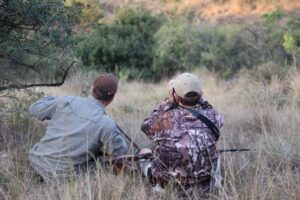 up the valley where the bull would likely come down from and drink. As the sun began its slow descent, we waited in silence.
up the valley where the bull would likely come down from and drink. As the sun began its slow descent, we waited in silence.
With each passing minute, the last few days of intense hunting filled my thoughts. Were we following the right bull’s tracks? Should we try a different approach? Was there another bull we should have taken?
Then, about 30 minutes before losing light, we heard the faint churring of Oxpeckers high in the trees. A lone Impala ram stood halfway up the valley, his gaze fixed toward the same area. I nudged Pieter, whispering, “There’s something up there.” To our left, a Crowned Eagle swooped down into the valley, startling a female Bushbuck whose alarm call shattered the silence, echoing off the valley walls. For a moment, Pieter and I shared a wide-eyed look but quickly returned our focus to the clearing, hoping the alarm call would not affect the Buffalos’ apparent routine.
With the last moments of daylight upon us, I finally glimpsed a dark form emerging as the bull slowly pushed his horns through the dense bush. It was him. A wave of emotions swept over us—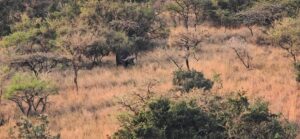 relief, excitement, and the satisfaction of a hard-fought pursuit. Behind him trailed the other bull, noticeably younger, with less character in his horns. The two bulls cautiously made their way down the hillside, pausing every few meters, the older one lifting his nose to test the air, his eyes scanning the ground for any sign of threat. He entered the second clearing, which we had pre- determined at 80m . “Let him come in closer,” I whispered. Step by careful step, he closed the distance, finally reaching 60 meters.
relief, excitement, and the satisfaction of a hard-fought pursuit. Behind him trailed the other bull, noticeably younger, with less character in his horns. The two bulls cautiously made their way down the hillside, pausing every few meters, the older one lifting his nose to test the air, his eyes scanning the ground for any sign of threat. He entered the second clearing, which we had pre- determined at 80m . “Let him come in closer,” I whispered. Step by careful step, he closed the distance, finally reaching 60 meters.
With a whistle, I stopped him in his tracks, broadside. Pieter’s .404 Jeffery rang out, the shot echoing as the bull lurched from impact. He followed with two more well-placed follow up shots, and within moments, the bull was down. His death bellow reverberated through the valley, chilling us to 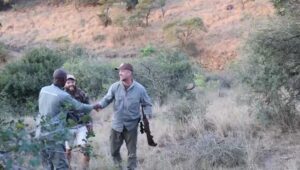 the bone. It was over, with not a second to spare. The laughter, smiles, and pure joy shared by our team at that moment are indescribable. It’s these moments that call us back, pushing us to go further, and to always raise the bar.
the bone. It was over, with not a second to spare. The laughter, smiles, and pure joy shared by our team at that moment are indescribable. It’s these moments that call us back, pushing us to go further, and to always raise the bar.
In the end, hunts like this are about so much more than just the trophy. Pursuing specific, old animals that are past their breeding age and no longer contribute genetically, is one of the most meaningful ways to conserve and preserve the genetics of the species. These hunts reward the patience, skill, and respect it takes to match wits with an experienced, seasoned animal. This is the essence of true hunting—the balance of conservation and pursuit, culminating in the memories and bonds that will last a lifetime.
